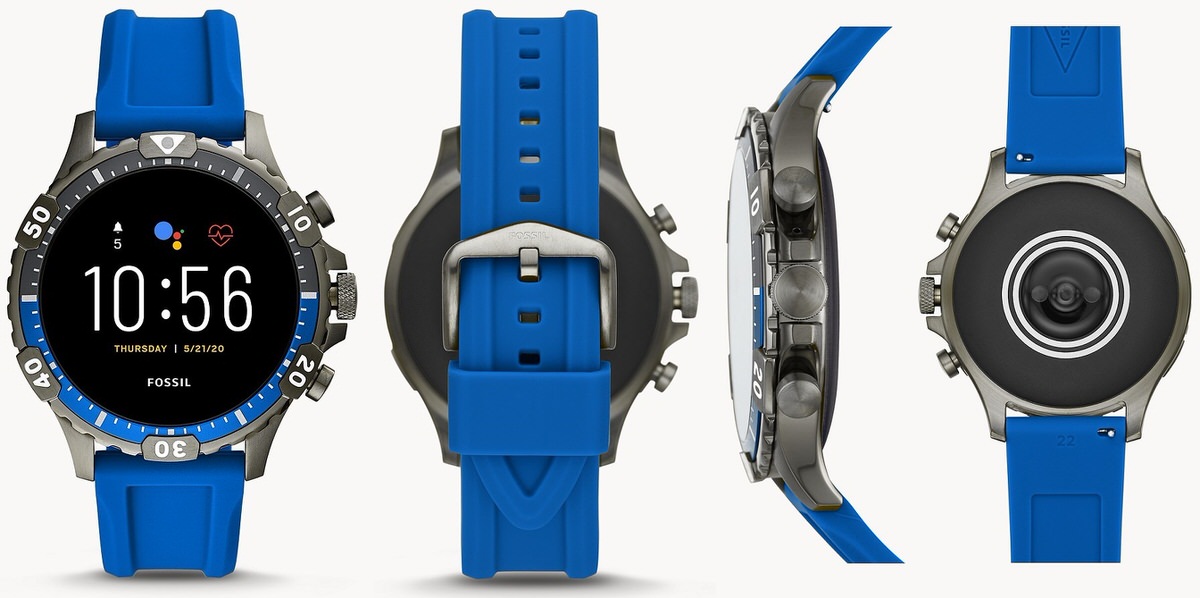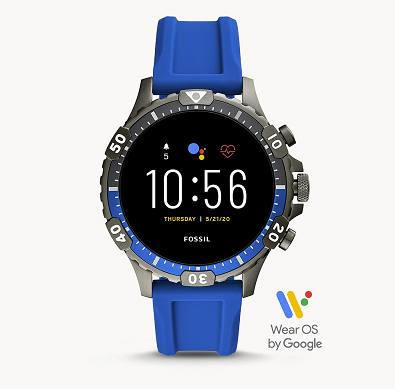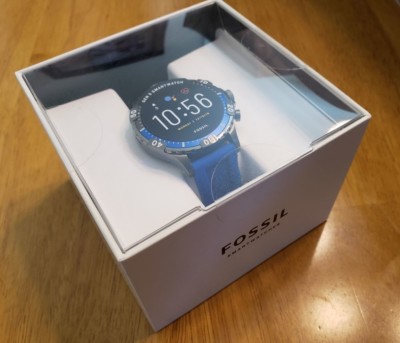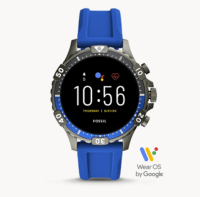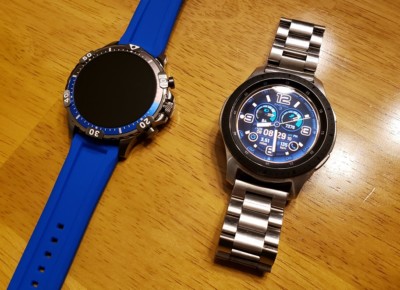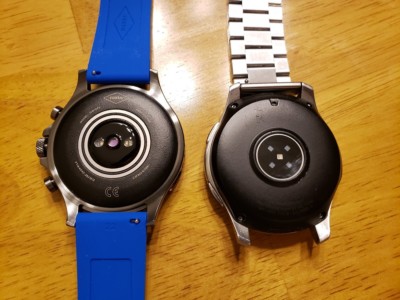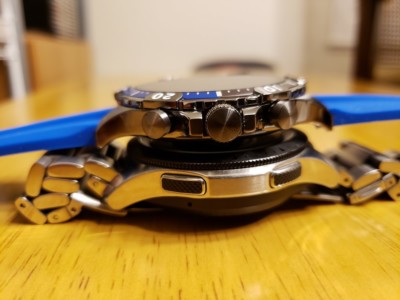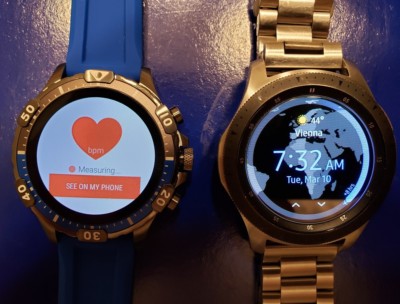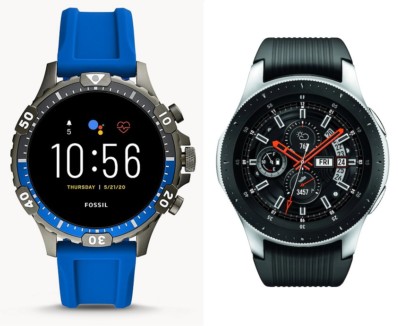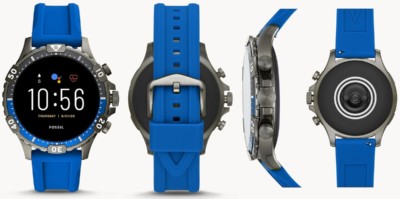Contents
A Fast, Wear OS Watch
I have owned several smartwatches over the years. Most notably, the Pebble 2, Pebble Time Steel, and the Samsung Galaxy Watch (2018). Watches are both a fashion accessory and a convenient way to check on your important notifications without constantly having to take out the phone (and getting sucked into addictive app surfing).
There are two major watch operating systems (OS) that are specifically made for Android phones: Google’s Wear OS and Samsung’s Tizen OS. As much as I enjoy Google’s services, I had ultimately chosen the Samsung Galaxy Watch (46mm) in 2018 after Pebble was purchase by Fitbit and its operations shuttered. In this review, I will detail the differences between both OSes and the Pros and Cons of the Fossil Gen 5 Garrett (Wear OS-based).
Disclosure: This product was received through Amazon Vine, an Amazon invite-only program offered to its most helpful reviewers for an honest, unbiased, unpaid opinion. Vendors cannot influence the review, neither a positive nor negative evaluation affects membership, and item’s value may be taxable income. YuenX is independent of Vine. Learn more
In A Nutshell
Fossil has made some great improvements over its predecessor with the Gen 5 watches. The Garrett is one of the fastest Google Wear OS-powered watches available today with its generous storage and memory upgrades. Furthermore, the company has added some improvements to Wear OS on its own in an attempt to prolong battery life and improve reliability. It is a beautiful, very functional watch, but is bogged down a bit by Google’s negligence with its Wear OS software that powers these devices: it occasionally froze and the battery life is still not as good as where I would like for it to be. Compared to the Galaxy Watch of 2018, I still prefer the Tizen OS that drives Samsung’s watches.
What’s Good? What’s Bad?
Pros
- One of the more beautiful, circular, Wear OS-based, 46mm smartwatches
- Looks great on my small wrist
- Sturdy material (stainless steel) and glass
- Enjoyable to wear
- Light (3.5oz, 100g) and relatively thin (0.39″, 10 mm)
- Smooth performance made possible by Qualcom’s Snapdragon Wear 3100 brain and generous memory
- This watch is one of the fastest, Wear OS-based smartwatches
- Responsive touchscreen
- Generous amount of storage (8GB) and memory (1GB) to help improve performance
- Beautiful, bright, 1.28″ AMOLED display with a crisp 416×416 resolution
- Deep blacks and 328 ppi sharpness
- Fossil’s own battery saving features (24+ hours) to address the poor battery life Wear OS is known for
- In testing, I got about as much as 11 hours to 2 days of battery life, depending on which features were turned off
- Fossil appears to put more work into improving Wear OS than Google itself
- Works with iPhone, though Wear OS works best with Android phones
- Rapid, wireless charging (go from 0 to 80% in less than 1 hour)
- Waterproof to 30m (100′, 3 ATM), making it usable for diving/snorkeling/swimming
- Activity tracker (automatically tries to detect your workout type)
- A LOT of different styles to choose from to fit your fashion sense (though all Gen 5 Garrett are 46mm cases)
- Nice, blue color, including the silicone band (though I prefer silver, stainless steel)
- Large amount of apps available through the Google Play store
- One of the standout features of Wear OS is that many of Google’s core apps become accessible
- Interchangeable, 22mm watch bands (same as the 46mm Galaxy Watch)
- Quick-release, silicone band is included
- GPS, Accelerometer, Altimeter, Gyroscope, Heart Rate (optical) sensors for fitness/health tracking and Map usage/Directions
- Google Assistant integration
- New Speaker built in
- Can take and make phone calls with built-in microphone/speaker combination
- Heart-rate tracking and Google Fit health integration
- Other fitness apps will work with the watch, including Runtastic, Runkeeper, Nike, etc.
- Scrolling through apps and messages is done through a smoothly rotating, textured (and great-feeling) crown (center right button)
- Other buttons (top, left) are re-programmable
- Can choose which notifications to display on the watch
- To minimize distractions and to maximize battery life, I only want notifications that matter most (text, phone, email, reminders, etc)
- Google Pay for NFC-based payments
- Wi-Fi 802.11 b/g/n for wireless syncing and updates
- Bluetooth 4.2 LE
- Multiple language support, including Chinese
- Fairly priced
- Find Phone feature
- Music control option (enabled by default)
Cons
- Battery life is abysmal (like the Apple Watch), clocking in at only about 11 hours to 2 days, depending on which features are enabled
- The poor battery life also makes the watch not be able to track sleep as well as the Galaxy
- Rotating crown is not supported by all apps (fault of the app developer/Wear OS apps in general)
- Occasional freezes requiring a reboot (a common issue with Wear OS)
- Google Play store makes finding watch faces not as easy to find (when compared to Samsung’s Galaxy Store)
- Proprietary charger
- Screen does not take up the entire display. There is a visible bezel
- Only Bluetooth 4.2 LE instead of the newer, more efficient Bluetooth 5.0
- Bezel does not rotate. It’s purely aesthetic. Navigation is performed through the crown
- One should note that the Galaxy’s rotating bezel can sometimes inadvertently wake up the screen, though that can be turned off
- No LTE/4G support. Must be paired to a smartphone
- 46mm case size may be too big for some wrists
- I generally find 46mm to be best suited for men, though I have seen some women wear them
- Fossil’s Julianna brand is geared towards women
- Fossil is one of the remaining manufacturers of Wear OS watches
- My biggest concern is how long this watch/Wear OS continues to be supported
- Unlike Samsung, Google seems to have relegated its watch operating system into the shadows since 2018
- Not as popular as the Apple Watch
- No ECG/EKG: uses a less reliable, optical Heart Rate sensor instead (though the HR was almost as accurate as the Garmin Forerunner)
Notes
- Watch should be kept 8″ (20cm) away from medical devices to avoid any RF interference
Comparison with Samsung’s Galaxy Watch
Now let’s compare the Galaxy Watch/Tizen OS and the Fossil Gen 5 Garrett/Wear OS. Which one is better? Bear in mind that the Galaxy is two years older.
Samsung Galaxy Watch Advantages
- Bigger display (1.3″) and more usable screen. It does not have a black bezel like the Garrett (1.28″)
- Better battery management, lasting as much as 7 days. Fossil: about 1-2 days. Both watches can last longer in Time-only mode, though the Galaxy would live on for considerably more
- Navigation via a rotating bezel. One of the Galaxy’s stand out (and my favorite) features that makes navigating the watch and apps VERY easy. It also works across all apps, whereas with Wear OS, only apps that support the Garrett’s rotating bezel work
- More reliable. Tizen OS rarely ever froze or glitched on me over the past two years. With Wear OS, I already had problems on the first and second day, both requiring reboots
- Better support. Samsung seems to continue investing in Tizen OS, whereas Google seems to have neglected its watch since 2018
- Style. This is subjective, but my wife and I much prefer the look of the Galaxy Watch over the Garrett
- Fitness tracking. Samsung Health’s app is much better designed and friendlier-to-use than Google Fit
- Auto-detection of fitness activity. Samsung can very reliably detect a large amount of activities
- Galaxy, in combination with a longer battery life, can track sleep very well
- Integration with Galaxy phones. It is without saying that the Galaxy Watch is much more integrated with the Galaxy phones
- First party apps. Samsung has made some excellent apps. Google relies on third party developers to provide apps
- App store organization. Samsung’s Galaxy Store has dedicated sections for watch faces and apps, whereas Google’s Play store is a mess
- Touchless pay. Samsung not only supports Google Pay, it also has Samsung Pay, making the watch accepted at more locations than Google’s solution alone
- LTE option. Unlike the Galaxy Watch, the Fossil Gen 5 requires a smartwatch (or Wi-Fi) to connect to the internet and does not offer an LTE option
Fossil Gen 5 Garrett Advantages
- Sharper screen (416×416 @ 328 ppi). Galaxy: 360×360 @ 278 ppi
- Google’s voice assistant. It runs circles around Samsung’s slow and clunky Bixby
- Number of apps. Google’s Play store contains slightly more apps than Samsung’s app store
- Google’s core apps and services are available in full force on Wear OS. Samsung’s watches do not have native (if any) access to them
- Variety of styles. Fossil has made a large variety of designs available. Furthermore, Google’s Wear OS is supported by a larger number of manufacturers. Tizen OS is a Samsung-made and Samsung Watch-exclusive system
- Fast charging. The Galaxy cannot fast charge, though the difference in overall charging speed is negligible
- Apple iPhone/iOS support. Wear OS has a slight edge over Tizen OS in its support for Apple’s phones.
- Google Maps. Who does not use that app? It comes with Wear OS. Samsung does not have built-in support nor can it get Google Maps natively. There are third-party apps that somewhat integrate with Google Maps through the phone.
- Water immersion. It can go down 30m (100′), whereas the Galaxy only can go to 1.5m for up to 30 minutes (IP68 waterproof rating)
- More storage and memory. At nearly double the amount of each, the Fossil provides more future-proofing than the Samsung
Final Thoughts
Fossil has made some great strides with the Gen 5 Garrett, improving a lot over its predecessors and competitors in both hardware and software. Its watches are beautiful, fast, and have additional functionality added by Fossil (such as its battery saving modes) in an attempt to stand out. It is one of the fastest Google Wear OS watches out there. Ultimately, however, I still prefer the 2018 Galaxy Watch from Samsung for its reliability, better looks (for my taste), quick navigation through its rotating bezel, and longer battery life. Until Wear OS becomes more reliable (it has improved a lot over the yers) and allows for a multi-day battery life, I will continue to not purchase watches based on Google’s neglected watch operating system.

